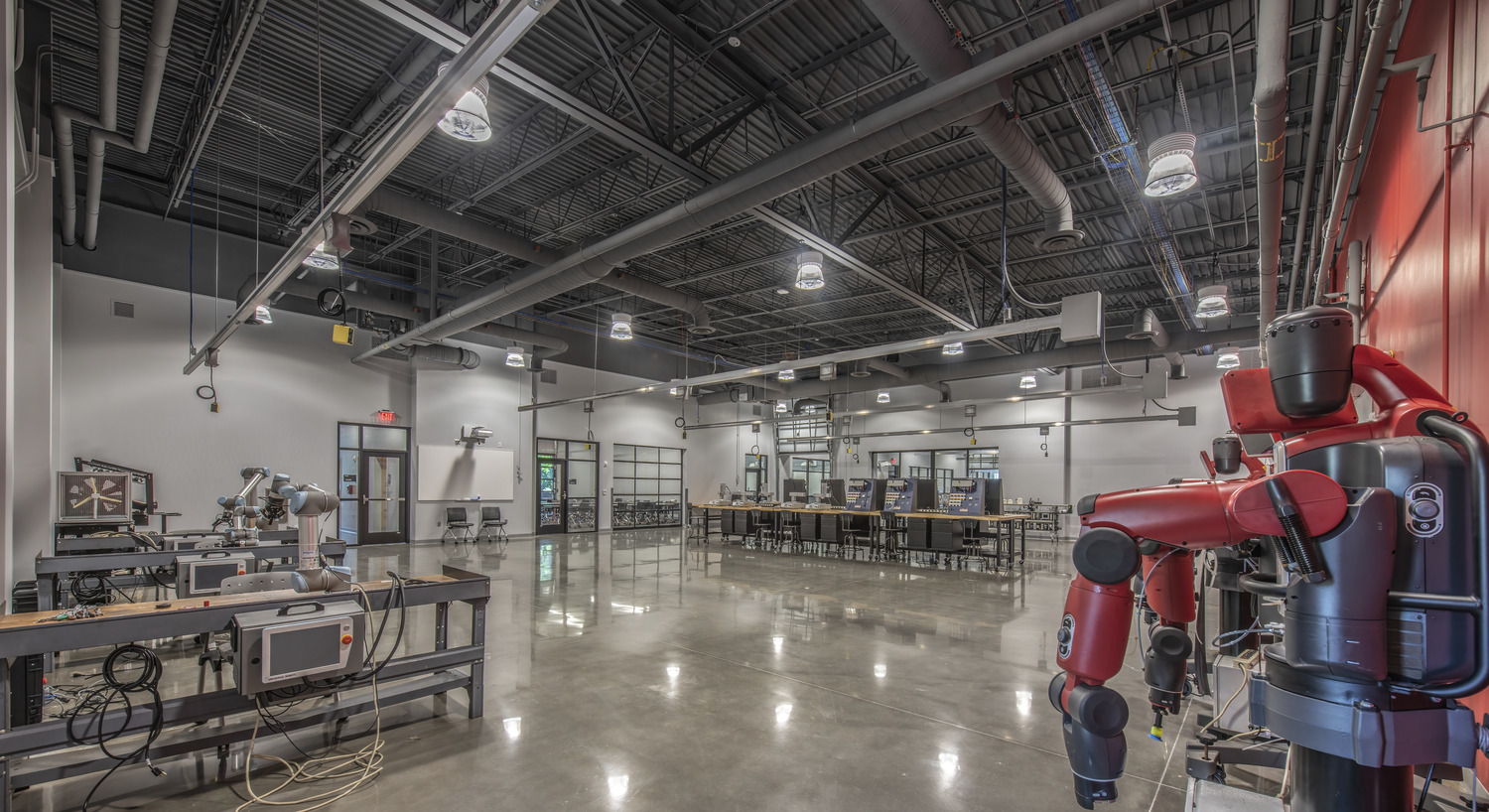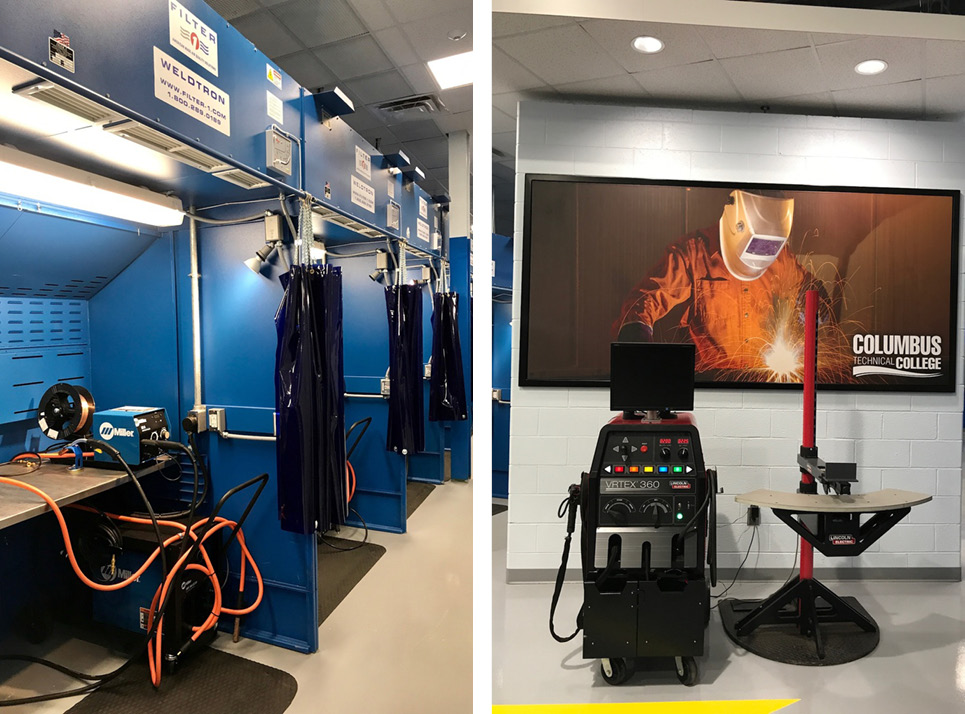Share This Story
At the intersection of technical education and industry lies advanced manufacturing: a market that is on fire as companies seek skilled professionals with expertise in both traditional industrial arts and emerging technologies, from welders, to machinists, to programmers and more.
Administrators can capitalize on this rapidly growing market by embracing advanced manufacturing in their curricula. Such programs have the power to drive enrollment by boosting students’ earning potential through real-world training, ultimately contributing to regional workforce development and economic growth.
Serving as a trusted advisor to higher education partners, our team specializes in the planning, design and engineering of these impactful learning environments, utilizing three core design strategies to deliver effective implementation.
1. Leveraging Stakeholder Input
When embarking on new building designs, re-tasks or renovations for existing manufacturing education and training facilities, it’s important to recognize that this student population is comprised of a diverse blend of people, from traditional high school STEM graduates, to workers seeking certifications, to other professionals pursuing a change in career, all with variegated needs.
To meet their expectations, we encourage administrators to engage industry and community leaders, instructional staff and students in the design process; on-campus workshops or advisory groups can be formed to include all stakeholders and gain valuable insights. Broadening user input helps inform building layouts to incorporate sought-after features while reinforcing key elements of the program’s curriculum.

A compelling illustration of this approach was exemplified at Guilford Technical Community College (GTCC) where an outmoded bus manufacturing building was transformed into the Center for Advanced Manufacturing (CAM). Due to stakeholders’ safety concerns regarding equipment and machinery, students’ desired gathering areas were situated in corridors adjacent to the labs, rather than within. This arrangement enables participants to engage in group or private study and maintain a direct line of sight into their classrooms, while also allowing visitors to share in the total experience as they explore the building.
2. “Future-Proofing” Through Flexibility
Technology is always evolving, so advanced manufacturing spaces must remain highly flexible to accommodate shifting workforce needs and changes in the ways students learn. To accomplish this, institutions can incorporate designs that allow for easy reconfiguration, such as movable walls, modular furniture and other malleable building components. This provides greater versatility in how spaces are used, supporting both traditional instruction and new pedagogies.
Abundant power supply and distribution, ease of lab access and low-voltage network integration can further augment adaptability by enabling institutions to upgrade or modify their spaces, equipment and systems over time. Additionally, broadband internet connectivity and access to digital tools allow students and educators to research and experiment with the latest software, which mirrors what they will see in the workplace.

To encourage cross-curricular collaboration and flexible learning, designs for the Center for Advanced Manufacturing and Emerging Technologies (CAMET) at Chattahoochee Technical College incorporated contemporary classrooms and lab spaces that can be subdivided as needed. CAMET also boasts modern student amenities, such as charging stations and video display boards, as well as glass walls and garage-style doors through which staff can oversee student activities, fostering a sense of interconnectedness throughout the building.
3. Partnering with Industry
Colleges often join forces with industry giants to provide students with exposure to real-world manufacturing. These relationships serve a dual purpose: equipping students with the skills they need to excel in the workplace, and creating a talent pipeline for businesses to hire new employees immediately following graduation.
Some forward-thinking companies cover costs so that established employees can attend courses at nearby colleges to enhance their capabilities and obtain or requalify certifications. Furthermore, economically-savvy states are directly financing programs to address workforce shortages in hot industries and to fulfill local demands for skilled labor. In this vein, the Technical College System of Georgia (TCSG), a state agency, recently commissioned two new college and career academies in Dooly and Monroe counties, and routinely partners with new industries in Georgia.

The 21st century welding lab at Columbus Technical College was designed to house both simulators and self-contained welding booths, where program participants work alongside local industries like Caterpillar, Inc. and regional employers like the U.S. Army at Fort Benning. Through these hands-on experiences, they glean knowledge that helps them pursue rewarding careers in the fields of construction, industrial maintenance and repair, manufacturing and transportation.
The Next Frontiers
As advanced manufacturing and emerging technologies—such as drones, robotics, internet of things (IoT) and artificial intelligence—continue to grow at a breakneck pace, it’s paramount that students have access to well-designed facilities and adequate training to launch and continuously advance in their careers.
Colleges and universities can play a vital role in helping them navigate imminent workforce changes by providing them with the environments, tools and resources they need to drive financial, technical and cultural progress throughout their communities and beyond.
